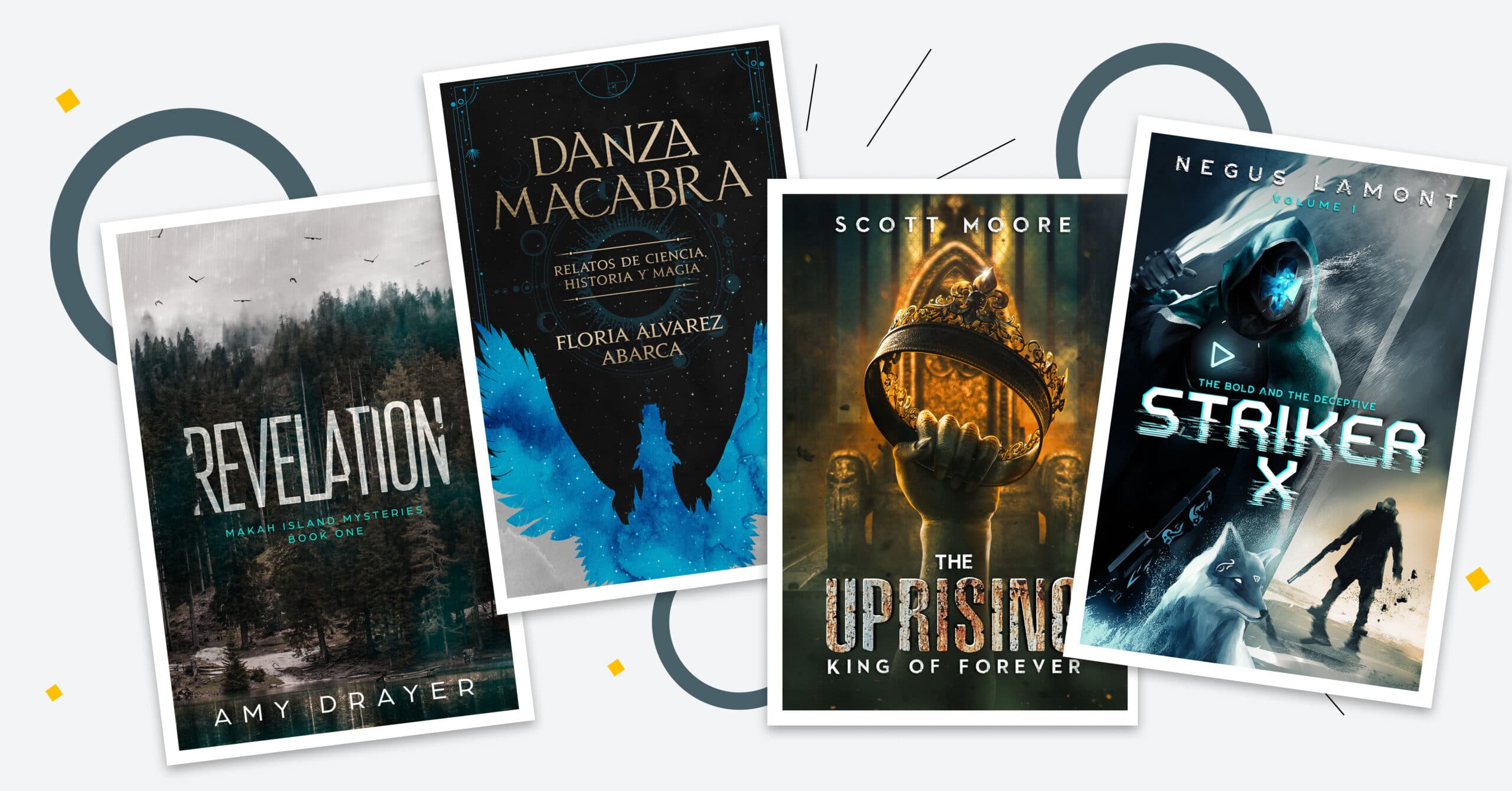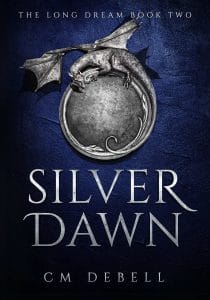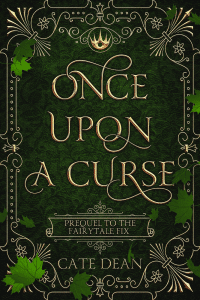During one of his lectures, Brandon Sanderson, a best-selling fantasy author, stated that ideas are cheap because masterful execution is what matters the most. Thus, if your writing is stellar, you shouldn’t worry about the originality of your idea.
Book covers, on the other hand, are a slightly different breed. They are meant to sell by making a smashing first impression.
Therefore, covers with great execution and interesting ideas get the biggest slice of the pie.
Now:
How can you come up with the book cover design ideas that will help your story shine among the competition?
Well, it’s all about process, preparation, and inspiration.
Therefore, we prepared for you a simple set of advice to consider before working with a designer and 48 examples of book covers that inspire.
What You Need to Do Before Hiring a Book Cover Designer
So, you already have a book (congrats!), and now, you want a professional designer to create the eye-catchy cover for it. You can simply hire an artist and wait for the result.
However, even though a professional designer can create an effective cover following general guidelines, he or she lacks a profound understanding of your story. On the contrary, the creative synergy of the author and the designer leads to the best cover art.
So, how can you maximize the effectiveness of your collaboration?
Well, read along for some book covers design tips.
Study the Market of Covers
Likely, your book was inspired by the style and stories of other writers. The same with the covers: close familiarity with the works of others provides access to the richer pool of ideas.
As follows, our first advice is to dig up as many appealing covers as you can and study them. In particular, pay close attention to the book covers of your genre to understand its conventions.
As a result, you will get a better vision of what your target audience wants.
However, don’t be afraid to get inspiration from different genres. Ideas don’t discriminate.
Go ahead, and surf the portfolio of book cover designers, Pinterest boards, Amazon store, and redesign cases to see some common mistakes.
Find Some References
Designers LOVE references.
No doubt, many professional cover artists wish to have the ability to read minds, but alas. So, they have to resort to less impressive methods.
References help designers better understand your vision and then translate it into the desired book cover design.
After diving deep into the world of book visuals, save some of the most gripping examples so later you can show them to the designer: “Here! That’s the vibe I want.”
As a result, the artist will be beyond grateful, and your book cover will be more accurate to your imagination.
Go Beyond Just Books
Have a bunch of favorite movies that somehow inspired your story? Maybe a photoshoot that shares a similar atmosphere? Or even an album by a group that ponders on similar ideas?
Great! Those can be some prime sources for inspiration too. Include them into your “folder” of ideas and share them with your designer.
Feel Free in the Expression of Your Thoughts and Emotions
Be sincere. Don’t be afraid to share some of the thoughts or emotions you want your book cover to convey.
References are effective. However, sincerity helps create custom book covers with ‘character,’ which are difficult to simply pass by. If you want to learn more about how to create a designer brief, read our article for Alliance of Independent Authors.
48 Book Cover Design Ideas for Your Inspiration
There are thousands of ways to create a book cover. Let’s look at some of the most common approaches and try to figure out what makes them eye-catchy. Of course, some of the examples will be a combination of different approaches, but we simply will focus on their most prominent feature.
1. A Color is a Powerful Tool
The research demonstrated that people have strong, well-defined associations between color and temperature, smell, and emotions. A color can be warm, cool, wet, dry. It can signal danger or imply coziness. A color palette is an ultimate tool for evoking certain emotions in your target audience.
Nonetheless, the perception of color is not universal. For example, in the said research, 34% of participants associated blue with trust. However, 21% and 11% choose white and green colors respectively.
However, no matter what emotion you want to evoke, a book cover that is heavy on color use should look appealing.
Here are a few examples of book cover design ideas with tasteful color use. What emotions do they inspire? Well, you tell us.
2. Illustration With Unique Character
A book cover that boasts a nice hand-crafted artwork has a special character to it that is impossible to replace with masterful photoshop work.
Besides, depending on its style and execution, an illustration can carry a wide spectrum of different “vibes.” For example, it can grant:
- The impression of light-hearted cartoons
- The style of the 20th-century fantasy artists the works of which embellished the stories of the genre’s greats
- The modern feel of concept arts.
The best part? You can choose whatever impression you want your book cover to have.
Here are a few examples of unique illustrated book covers with character.
3. Protagonist as a Focal Point
The most impactful stories make readers empathize their protagonists. The audience is expected to fill in the heroes’ shoes, to experience the joy and anger together with them, to be afraid for them in cases of danger, and celebrate their achievements.
Book covers can help to amplify this feeling by putting the main character in charge of the cover. It’s a thin line to thread as by putting too much focus on a protagonist, you risk dissolving the story a cover should tell.
Here are several book cover designs that threaded this line well.
4. The Strength of Simple Concepts
Often, less is more, and there are plenty of covers that prove it. Nonetheless, taking the minimalist concept and making it into a promising artwork is a rite of passage for many designers. It’s risky as the bad execution can result in an underwhelming art that fails to grab attention.
Here are a few examples that embraced the challenge of simple concepts and succeeded.
5. Strong Emphasis on a Book Title
Another interesting book cover design idea is making the title a focal point of the design. It can result in eye-catchy covers with memorizable titles.
Again, such an approach is a question of fine balance. On one hand, the text should play into the concept of a book cover well. On the other hand, it should be visible and easily readable.
For example, here are five book covers that did it well.
6. Dark Tones
Using a lot of dark hues to amplify the contrasts and inspire certain emotions is another prevalent practice.
However, the sloppy use of dark tones can result in an unassuming cover that is difficult to parse. Thus, a designer who chooses such an approach should be precise with the contrasts he or she creates.
Some inspiring examples of book covers filled with darkness include
7. Conceptual Typography
On the one hand, tasteful typography that serves the context of design well can be a real cherry on top of a beautiful book cover. On the other hand, paying little to no attention to text representation can result in text that feels too out of place.
Thus, the font should belong to the genre, the size of the text should be big enough without obstructing other visuals, and the layout should be intuitive. (Do you know your typography? Check this quiz to figure out.)
These are the custom book covers that did typography well.
8. Uncommon Cover Design Idea
Sometimes, you can step out of the box and come up with some unconventional design concept to win over the audience with the original approach.
However, remember that cleverness can be easily overdone, and the final result will be confusing for the audience. Overall, be cautious, but don’t be afraid to experiment like some of the following designers did.
Conclusion
Hopefully, you’ve found our advice useful and examples inspiring.
Maybe, you have some inspiring examples of book covers? Share them in the comments below; we would like some inspiration too 🙂



















































